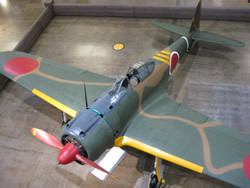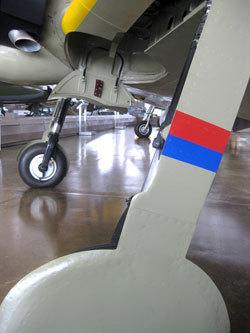This thread has made me realize how much visual markings on aircraft were still a critical part of aviation in World War II.
Invasion stripes are the most famous examples of course, but there were so many others.
G-symbols on Navy aircraft (
chart),
shape-letter combinations on heavy bombers, and USAAF fighter group nose/tail markings are just a few from the American side. The German Platzschutzstaffel, or airfield protection squadrons, had
red and white bands on the underside of the aircraft and before that other fighters had Kullerschnauze spiral patterns on their spinners.
[1][2][3] The British painted the leading edges on their aircraft yellow for the same reason.
[4][5] The Japanese adopted this as well and also had unit markings, such as chevrons on their Ki-43s...

(Source:
Tumblr)
Furthermore, I didn't appreciate how much was done not for recognition or identification, but simply for the benefit of the crew flying or maintaining the aircraft itself. For example, both Japan and Germany painted markings on the landing gear of their A6Ms...

(Source:
Tumblr)
...and Fw 190s...

(Source:
Wikimedia Commons)
...to measure the weight of the aircraft. American multi-engine aircraft featured red lines where propellers intersected the fuselage. The TBF had red flags on the wings that retracted to confirm to the pilot the wings were locked.
[6] The British even went as far as using color changing paint to detect poison gas...

(Source:
Tumblr)
For all of the advances in technology that were developed during the war – such as radar, IFF – the dominant instrument was still the mk 1 eyeball. There were no annunciator panels to tell you when some part of your aircraft was not in the right position. Even when there was, it seems some designers could not shake off the "this is the way we've always done it" institutional inertia. So, for example, when it came time to mount the engine instruments on the Hs 129, it was entirely reasonable to place them outside of the cockpit on the inside of the engine nacelles because that was the way it had been done for years before the
autosyn was invented in the 1930s. (For example,
on the Ford Trimotor.) Or to have
yellow landing gear and
color coded flap indicator poles on the P-40.
_________________
Tri-State Warbird Museum Collections Manager & Museum Attendant
Warbird Philosophy Webmaster





